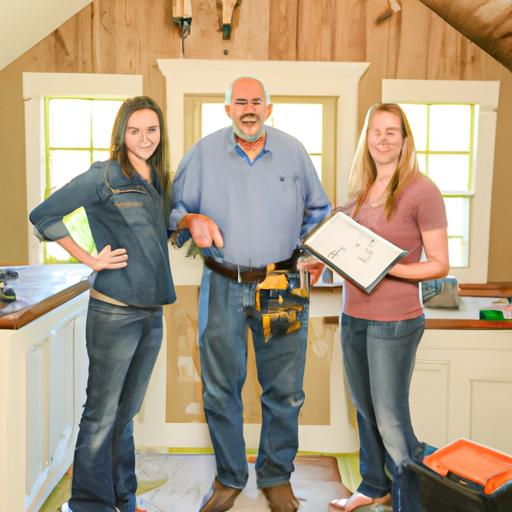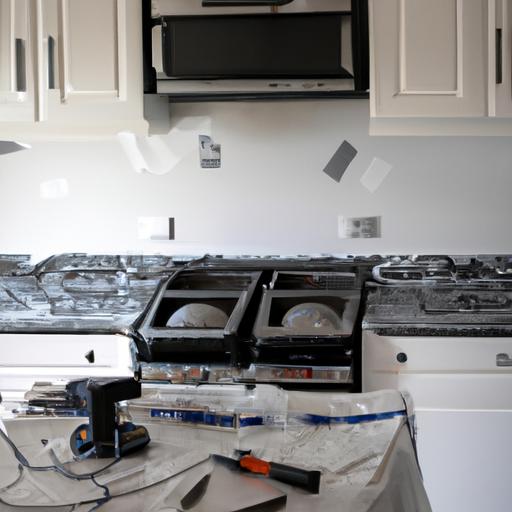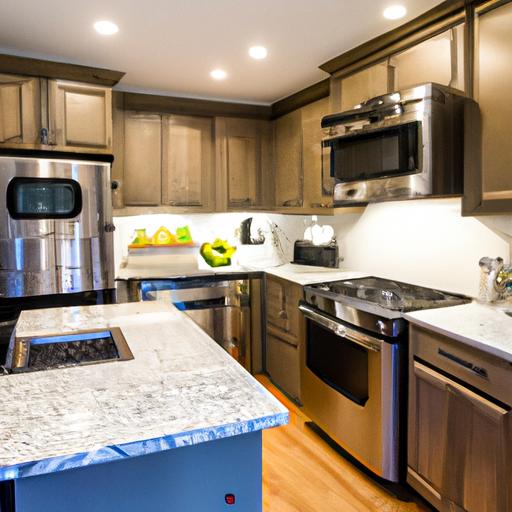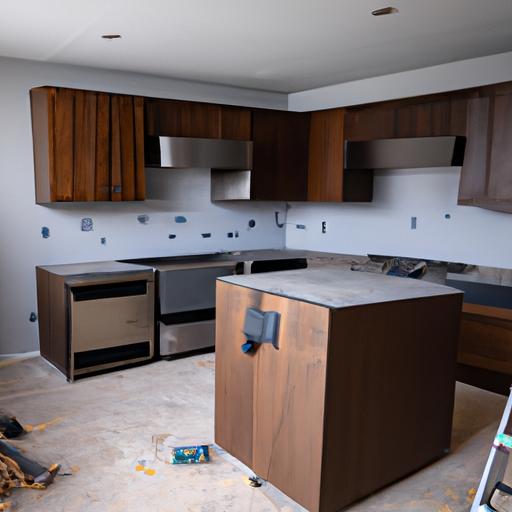Best Way to Borrow Money for Home Improvements
Introduction
In the journey of homeownership, there comes a time when the desire to enhance and renovate our living spaces becomes irresistible. Whether it’s a cozy kitchen upgrade, a luxurious bathroom remodel, or a complete home makeover, the importance of home improvements cannot be overstated. These renovations not only enhance the aesthetics of our homes but also add value to our property, making it a worthwhile investment for the future.
However, embarking on home improvement projects often requires a substantial financial commitment. This is where the need for financial resources becomes crucial. From minor repairs to major renovations, having access to the right amount of funds can make all the difference in turning our dream home into a reality. But with a myriad of borrowing options available, choosing the best way to borrow money for home improvements can be a daunting task. Let’s delve into the world of borrowing and explore the optimal strategies to fund your home improvement endeavors.
Understanding different borrowing options
A. Personal Loans
When considering personal loans for home improvements, you are essentially borrowing a fixed amount of money from a financial institution, which you repay over a predetermined period. Personal loans offer flexibility in terms of loan amounts and repayment schedules, making them a popular choice for homeowners looking to fund their renovation projects.
B. Home Equity Loans
Home equity loans allow you to borrow against the equity you have built in your home. This type of loan typically offers lower interest rates compared to personal loans, as your home serves as collateral. Home equity loans are ideal for substantial home improvement projects where a large sum of money is required.
1. Fixed-Rate Home Equity Loans
Fixed-rate home equity loans provide a predictable repayment schedule, with a set interest rate for the duration of the loan. This can be advantageous for budgeting and planning your home improvement expenses.
2. Home Equity Lines of Credit (HELOC)
HELOCs function similarly to credit cards, where you have a revolving line of credit based on the equity in your home. This flexibility allows you to borrow as needed for your home improvement projects, making it a versatile borrowing option.
Factors to Consider Before Borrowing Money
A. Interest Rates
When considering borrowing money for home improvements, one of the key factors to evaluate is the interest rates associated with the loan options available to you. Interest rates can significantly impact the total cost of borrowing and ultimately affect your financial commitment in the long run. It’s essential to compare interest rates from different lenders to secure the most favorable terms that align with your financial goals.
B. Repayment Terms
Another crucial aspect to assess before borrowing money is the repayment terms offered by the lenders. Understanding the repayment schedule, including the duration of the loan, frequency of payments, and any early repayment penalties, is vital in planning your finances effectively. Selecting a loan with flexible and manageable repayment terms can help you stay on track with your budget while meeting your home improvement needs.
C. Fees and Charges
In addition to interest rates and repayment terms, it’s imperative to consider the various fees and charges associated with borrowing money for home improvements. These fees may include origination fees, closing costs, and processing fees, among others. Being aware of these additional costs can help you calculate the total expense of the loan and make an informed decision about the most cost-effective borrowing option.
D. Credit Score Requirements
Your credit score plays a significant role in determining the loan options available to you and the interest rates you may qualify for. Before applying for a loan, it’s essential to check your credit score and understand the credit score requirements of different lenders. Maintaining a good credit score can increase your chances of securing favorable loan terms and lower interest rates for your home improvement project.
E. Loan Amount
Lastly, when contemplating borrowing money for home improvements, consider the loan amount you require to fund your renovation plans adequately. Assessing the total cost of the project, including materials, labor, and other expenses, can help you determine the appropriate loan amount to cover your needs without overborrowing. Selecting a loan amount that aligns with your budget and renovation goals is essential for a successful home improvement project.
Choosing the Best Borrowing Option for Home Improvements
A. Evaluating Personal Financial Situation
Before diving into the realm of borrowing money for home improvements, it is essential to evaluate your personal financial situation. Take a closer look at your income, expenses, savings, and existing debts. Understanding your financial standing will help you determine how much you can afford to borrow without overstretching your budget. By assessing your financial health, you can make informed decisions about the amount of money you need to borrow and the repayment terms that align with your financial capabilities.
B. Comparing Different Loan Options
When it comes to borrowing money for home improvements, there is no one-size-fits-all solution. Different loan options offer varying interest rates, repayment terms, and borrowing limits. It is crucial to compare the different loan options available, such as personal loans, home equity loans, and lines of credit, to find the one that best suits your needs. Consider the interest rates, fees, and repayment schedules of each loan type to make an informed decision that aligns with your financial goals and preferences.
C. Seeking Professional Advice
Navigating the complexities of borrowing money for home improvements can be overwhelming, especially for first-time borrowers. Seeking professional advice from financial advisors or loan experts can provide valuable insights and guidance on choosing the best borrowing option for your specific circumstances. These professionals can help you understand the intricacies of different loan products, assess your financial situation, and offer personalized recommendations to ensure you make sound financial decisions when borrowing money for home improvements.
D. Reading the Fine Print
Before committing to any loan agreement, it is crucial to read the fine print carefully. Pay close attention to the terms and conditions, including interest rates, fees, repayment schedules, and any additional charges associated with the loan. Understanding the fine print will help you avoid any hidden surprises or unexpected costs down the line. By being diligent in reviewing and understanding the terms of the loan agreement, you can make a well-informed decision and choose the best borrowing option for your home improvement needs.
Tips for managing borrowed money for home improvements
A. Budgeting effectively
When embarking on home improvement projects, effective budgeting is paramount. Start by determining the total cost of the renovation and break it down into individual expenses for materials, labor, permits, and unforeseen costs. Creating a detailed budget will help you stay on track and avoid overspending.
B. Tracking expenses
Track your expenses diligently throughout the renovation process. Keep a record of every purchase, payment, and receipt to ensure that you are staying within your budget. By monitoring your expenses closely, you can identify any areas where you may be overspending and make necessary adjustments to stay on course.
C. Making timely payments
Making timely payments on your borrowed money is crucial to maintaining a good credit score and avoiding penalties. Set up reminders or automatic payments to ensure that you never miss a deadline. Timely payments not only reflect positively on your credit history but also help you build a trustworthy relationship with your lender.
D. Avoiding unnecessary expenses
While it can be tempting to splurge on luxurious upgrades during home renovations, it’s essential to differentiate between wants and needs. Avoid unnecessary expenses that can blow your budget out of proportion. Focus on essential improvements that add value to your home and align with your long-term goals.
E. Planning for future financial goals
As you manage borrowed money for home improvements, it’s crucial to consider your future financial goals. Establish a clear plan for repaying the borrowed funds and factor in any other financial objectives you may have, such as saving for retirement or building an emergency fund. By aligning your home improvement projects with your broader financial goals, you can ensure a sustainable and successful financial future.
Conclusion
As we conclude our exploration of the best way to borrow money for home improvements, it is evident that making informed financial decisions is crucial in achieving our renovation goals. By understanding the various borrowing options available, evaluating our personal financial situation, and managing borrowed funds responsibly, we can navigate the realm of home improvement financing with confidence.
Remember, the key to successful home improvements lies not only in the renovations themselves but also in the financial strategies that support them. By adhering to the principles of responsible borrowing, budgeting effectively, and planning for the future, you can embark on your home improvement journey with clarity and assurance. Let your home reflect your vision and style, supported by sound financial decisions that pave the way for a brighter, more beautiful living space.






